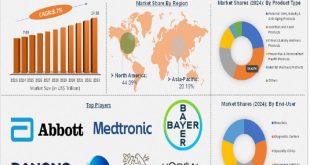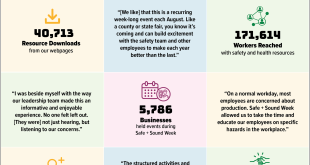The digital world, while offering unprecedented access and efficiency, can also become cluttered and chaotic. This is especially true for Customer Relationship Management (CRM) systems, the central hub for managing interactions and data related to customers. Over time, CRMs can accumulate redundant information, outdated processes, and inefficient workflows, leading to decreased productivity and inaccurate insights. Just like our bodies benefit from a regular health and wellness routine, your CRM needs periodic detoxification to ensure it remains a powerful and effective tool. This article explores the reasons why, and how to give your CRM the digital cleanse it deserves.
Identifying the Signs of CRM Toxicity
Ever feel like wading through mud when you’re trying to find something in your CRM? Yeah, that’s a sign. Think of it like this: if your CRM were a house, would you be able to find your keys? Let’s dive into some of the common indicators that your CRM is crying out for a detox.
Data Overload and Redundancy
Oh, the dreaded data dump! If you’re swimming in duplicate entries, outdated contacts, and irrelevant information, you’ve got data overload. It’s like that junk drawer we all have – overflowing and utterly useless until you sort through it. Redundant data not only clutters your system but also skews reports and wastes valuable storage space. Ever tried making sense of a report only to realize half the data is just…wrong? Not fun.
Process Inefficiency and Bottlenecks
Are your sales teams complaining about convoluted workflows? Are simple tasks taking way too long? These are telltale signs of process inefficiencies. Think about it – a smooth CRM should feel like a well-oiled machine, not a Rube Goldberg contraption. Bottlenecks can stifle productivity, frustrate users, and ultimately impact your bottom line. So, yeah, pay attention!
User Frustration and Disengagement
Okay, let’s be real. If your team dreads using the CRM, you’ve got a problem. User frustration leads to disengagement, which means people start finding workarounds or, worse, stop using the system altogether. And what’s the point of having a powerful CRM if no one wants to touch it with a ten-foot pole? We want happy users, right? Happy users, happy results!
The Benefits of a CRM Detox
Ready to roll up your sleeves and get your CRM squeaky clean? Here’s a step-by-step guide to help you through the process. Don’t worry, it’s not as daunting as it sounds!
1. Audit and Assess Your Current CRM
Before you start scrubbing, take stock of what you’re working with. Conduct a thorough audit of your CRM to identify areas of weakness, data quality issues, and process inefficiencies. What’s working? What’s not? Where are the bottlenecks? This assessment will provide a roadmap for your detox efforts. Think of it as a pre-flight checklist – essential for a smooth journey.
2. Data Cleansing and Deduplication
This is where you get down and dirty. Implement a data cleansing strategy to remove duplicate entries, correct errors, and update outdated information. Use data cleansing tools or manual methods to ensure the accuracy and consistency of your data. It’s tedious, sure, but the payoff is huge. Trust me.
3. Process Optimization and Automation
Identify and streamline inefficient processes. Automate repetitive tasks to free up your team’s time and reduce the risk of errors. Focus on simplifying workflows and improving the user experience. A little automation goes a long way. Think of it as upgrading from a horse-drawn carriage to a sports car!
4. User Training and Onboarding
Even the cleanest CRM is useless if your team doesn’t know how to use it effectively. Provide comprehensive training and onboarding programs to ensure users understand the system and its features. Address any questions or concerns and encourage feedback. An informed and confident team is a powerful team.
5. Regular Maintenance and Monitoring
A CRM detox is not a one-time event. Establish a regular maintenance schedule to monitor data quality, identify potential issues, and ensure the system continues to meet your evolving needs. Think of it as a regular health check-up – essential for long-term health and wellness. Little and often keeps your CRM fighting fit.
Tools and Techniques for CRM Detoxification
Okay, so you know what to do. But what tools can you use to make the job easier? Lucky for you, there’s a whole arsenal of options out there.
Data Cleansing Software
These tools automate the process of identifying and removing duplicate entries, correcting errors, and standardizing data formats. They can save you countless hours of manual work and ensure a higher level of data quality. Some popular options include .
Workflow Automation Platforms
These platforms allow you to automate repetitive tasks, streamline processes, and improve efficiency. They can be integrated with your CRM to automate tasks such as lead nurturing, email marketing, and data entry. Consider exploring .
CRM Analytics and Reporting
These tools provide insights into your CRM data, allowing you to identify trends, track performance, and make data-driven decisions. They can help you monitor data quality, identify bottlenecks, and optimize your CRM strategy. You might want to look into .
Maintaining a Healthy CRM: Prevention is Key
The best way to keep your CRM in top shape is to prevent problems from occurring in the first place. Think of it like brushing your teeth – a little preventative care goes a long way.
Establishing Data Governance Policies
Implement clear data governance policies to ensure data quality and consistency. Define standards for data entry, data validation, and data maintenance. Make sure everyone on your team understands and adheres to these policies. This sets the foundation for a clean and well-maintained CRM.
Implementing Regular Data Audits
Conduct regular data audits to identify potential issues and ensure data quality. These audits can help you catch errors early and prevent them from escalating. Think of it as a regular health check for your data.
Providing Ongoing User Training
Provide ongoing training to ensure users stay up-to-date with CRM best practices and new features. Encourage feedback and address any questions or concerns. A well-trained team is essential for maintaining a healthy CRM.
Staying Updated with CRM Best Practices
Stay informed about the latest CRM trends, best practices, and technologies. Continuously evaluate your CRM strategy and make adjustments as needed. The CRM landscape is constantly evolving, so it’s important to stay ahead of the curve.
By recognizing the signs of CRM toxicity and implementing a proactive detox strategy, you can unlock the full potential of your CRM system. A clean, efficient, and well-maintained CRM not only improves data quality and streamlines processes but also empowers users to deliver exceptional customer experiences and drive business growth. Investing in CRM health and wellness is an investment in the overall health and wellness of your organization. So, why not start planning your CRM detox today? Your future self (and your CRM) will thank you for it!
 Beverage Zone
Beverage Zone



